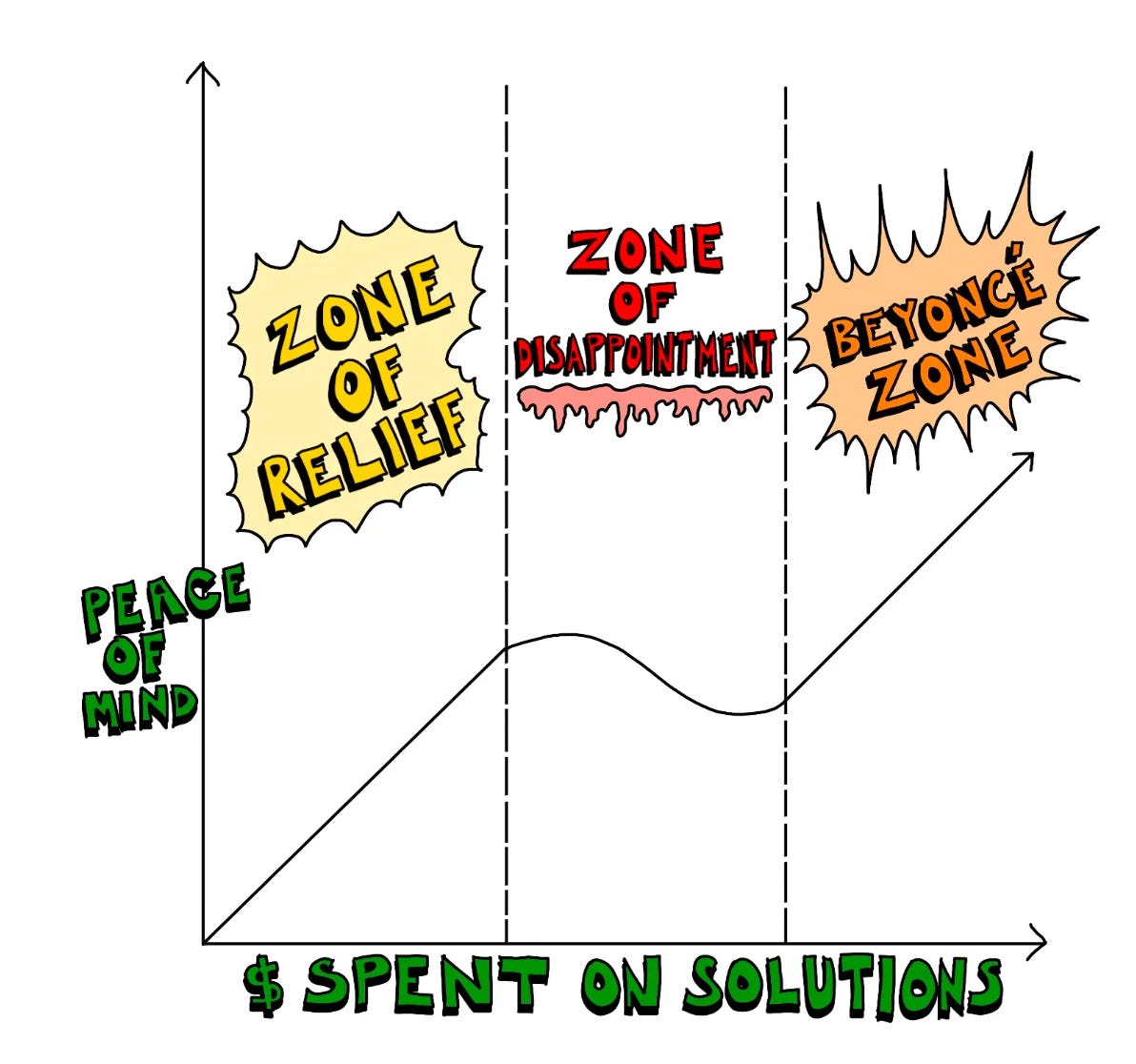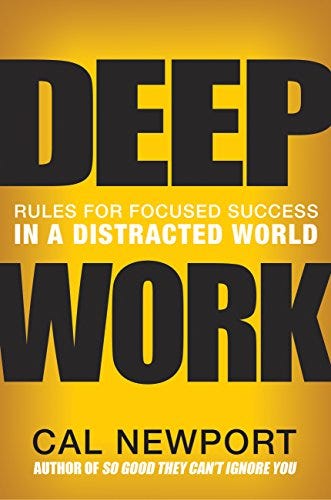Hello Adversity, Weekly Roundup #20 - June 17, 2023
A useful guide on public speaking, solvable vs. unsolvable problems, and more

Happy Saturday!
Welcome to the 20th edition of the Hello, Adversity Weekly Roundup. I hope you all had a great week.
It’s a day early, but I want to wish all the dads out there a Happy Father’s Day! (And since I completely forgot my shoutout last month, a belated Happy Mother’s Day as well.)
My dad is an important part of my life. The older I get, the more I appreciate all the different roles and responsibilities he has taken on over the years. He wears many hats. He currently serves as my main caregiver, which he likes to say is his full-time job. He’s not wrong. Caregiving is a 24/7 endeavor. At least this time, I’m the one paying the allowance.
My parents have made many sacrifices for me over the years, supporting both my health and my career. We may bicker. We may complain about the most arbitrary things. We may yell and curse into the Xfinity remote when the voice button won’t recognize what we are saying. But we are a team. We make this less-than-ideal arrangement work. And for that, I am grateful.
Without further ado, here are this week’s links:
In my weekly roundup a few weeks back I included a story about how Warren Buffett overcame his fear of public speaking. The article included different strategies Buffett employed to become more comfortable on stage, from reframing your nerves to practicing your speech under pressure.
This week, I came across another helpful public speaking resource, one that provides several concrete steps for improving as a speaker.
In his Curiosity Chronicle newsletter, investor and entrepreneur Sahil Bloom shared several strategies that he employed during a recent speaking appearance at a conference.
Even though Bloom does a lot of speaking, it doesn’t come naturally to him. It makes him nervous just like anyone else.
I loved this quote he included from Mark Twain:
There are two types of speakers: those that are nervous and those that are liars.
Many articles are written about public speaking, but they include vague tips like “Practice!” and “Pretend the audience is in their underwear.” This guide is not like that. There are many actionable takeaways that beginners and professionals can use to improve. I’ve done a lot of speaking over the years and found myself going “Oh, I should have done that all along” on several occasions.
Fear of public speaking is an underrated form of adversity. Having concrete steps to improve your craft is essential. As Bloom puts it:
[C]onfident public speaking is a critical skill for our careers and lives, one with the capacity to accelerate personal and professional endeavors meaningfully.
Public speaking is a skill worth mastering. It will never be “easy”, but it can unlock so many doors.
One of the joys of Substack is discovering new writers. I recently came across Maddie Burton’s newsletter, Your Five-Year Plan, and can relate to a lot of the themes she writes about.
Burton’s recent newsletter sheds light on the different types of problems we all face. She breaks out problems into three types:
simple solvable problems (ex. paying your neighbor’s kid to mow the lawn)
complicated solvable problems (ex. meal-planning for the week)
unsolvable problems (ex. the messiness of the writing process)
The first step in tackling these different types of problems is knowing where your problem falls on the continuum. Simple solvable problems land us in the “Zone of Relief”. We throw a little money at the problem and it goes away. But for the other two types, it is not so straightforward. In fact, if we are not careful, it can land us in a stressful place:
For those of us with limited resources, there’s a messy middle—the “Zone of Disappointment”—in which additional spending might lead to diminishing peace-of-mind returns, or make life more difficult by introducing new problems to contend with.
(The “Beyoncé Zone” is reserved for those with the resources to make anything go away. Sadly, I am not there yet.)
Wisdom lies in knowing what type of problem we are facing, and whether it can be solved with money and resources, or whether we should make peace with it. For those who like visuals, Burton provides a helpful graphic:
I can think of many situations where I have ended up in the Zone of Disappointment, throwing money at hopeless situations without an easy solution. Sometimes the best thing to do is take a step back and assess whether you are seeing the problem holistically, and if by intervening, you are making it worse.
Loneliness has been in the news a lot recently and for good reason. Even though not all solitary people are lonely, social isolation in aggregate can be bad for your health. Loneliness, however, is just one end of the social interaction spectrum. The opposite side—constant social engagement—can be just as toxic. Both extremes lead to dissatisfaction, burnout, and depression.
If you feel dissatisfied with your social interactions, there are ways you can course correct. The first step, however, is taking a critical look at where things stand currently:
Being intentional with your interpersonal contact and maintaining a variety of conversation partners are crucial to supporting a healthy social life. Keeping loneliness at bay requires a nominal, yet committed, effort: At the end of a day, week, or month, take stock of with whom you socialized, what kinds of interactions you had, and whether you feel emotionally satisfied to get a clearer picture of your social intake.
The article goes on to provide helpful frameworks for analyzing whether your current level of social engagement fits your ideal lifestyle. The author suggests looking at your social life not just from a quantity perspective but also from a quality point of view. For example, those who talk to a variety of people daily (immediate family, coworkers, friends, neighbors, strangers) tend to feel less lonely than those who talk to just one type of group.
Finished Reading: Deep Work, by Cal Newport
I’ve had a lot on my plate these last few months and have found myself struggling to focus more than usual. I wanted to read something that would motivate me to develop better focusing habits. Deep Work fits the bill.
The book has a simple premise: the more uninterrupted, focused work we can accomplish in this age of distraction (what Newport calls deep work), the more we will stand out from our peers and produce work of enduring value.
The mind is a muscle, and like any muscle, it needs to be exercised to stay in shape. The more we can practice how to focus, the easier it will get. Before you worry that this will set you up for burnout and exhaustion, Newport argues that deep work is meant to be finite; it can’t be sustained for long periods of time. By spending a few hours a day in a focused state, we can finish our work day on time and get to the more rewarding parts of our lives, such as spending time with our family or going out to dinner. As a point of comparison, Newport never works past 5 pm.
One insight I found particularly useful in the book was the notion of scheduling in distraction time. So often our default state is distraction, which forces us to schedule in blocks of time to focus. Newport argues that we should flip this thinking on its head. Our default should be focus; if we want to check email or social media, we should schedule time to do that instead. This approach helps to keep temptation at bay. It isn’t reasonable to quit our distractions cold turkey.
I’ve given this a try, and so far, so good.





Love this. And, another coinky-dink: I just met Maddie, too! So good. I'll have to check out what Warren has to say about public speaking. I just leave my body. When I started my now-paused podcast, I assured all of my guests that we would never use the video (a film student who didn't want to edit...or be "camera ready") and that the audio would be edited, too. (I am the murderer of "um".) That allowed them to be calm knowing they didn't have to worry what they looked like, could rephrase something if they wanted, and we could just have fun and not feel awkward about being awkward (mainly me). Can't really do that in a room full of people, though. But I think we should. xo
First of all, thank you for sharing my essay here! 🥰 I totally agree: my favorite part of Substack is stumbling across new-to-me writers (like you!) whose work resonates deeply, and connecting over shared experiences.
So much good stuff in here. My favorite part of Cal Newport's book (which I just reread!) is his idea of a "bimodal philosophy" of deep work. It normalized the way that I prefer to balance binge-creating and resting, which is a lot different from the common recommendation "Write a little bit every single day, and never break the streak!"
And I loved your reflection about life with your parents, which encapsulated the myriad challenges and joys of family and caregiving.